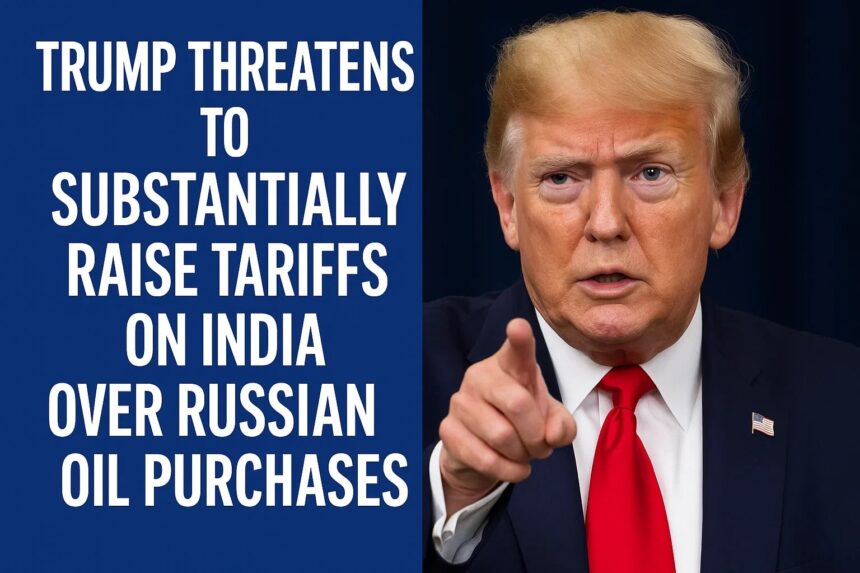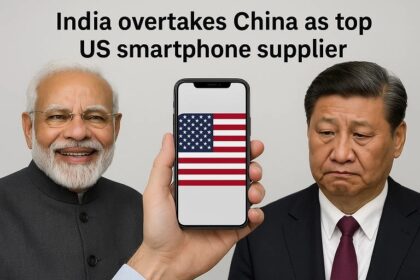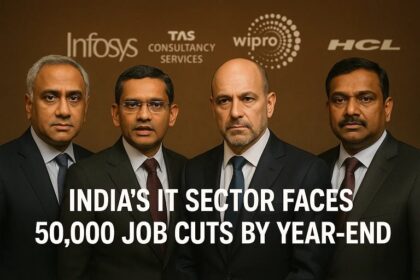On August 4, 2025, U.S. President Donald Trump announced plans to “substantially” increase tariffs on Indian goods, citing India’s continued purchase and resale of Russian oil as a key reason. The move, detailed in a Truth Social post, escalates an ongoing trade dispute and follows a 25% tariff on Indian imports implemented on August 1, 2025, with an additional unspecified penalty tied to India’s energy and military ties with Russia. India’s Ministry of External Affairs has called the tariff threats “unjustified and unreasonable,” highlighting the U.S. and EU’s own trade with Russia and their earlier encouragement of India’s oil purchases to stabilize global markets. This development, set against the backdrop of Trump’s August 8 deadline for a Russia-Ukraine ceasefire, risks straining U.S.-India relations and impacting global trade dynamics.
Background on U.S.-India Trade and Russian Oil
India is a significant U.S. trade partner, with bilateral goods trade reaching approximately $130 billion in 2024, according to the U.S. Census Bureau. However, the U.S. ran a $45.8 billion trade deficit with India, importing more than it exported. Key Indian exports to the U.S. include pharmaceuticals, textiles, and IT services, while India imposes high tariffs and non-tariff barriers on U.S. goods, particularly in agriculture and dairy, which have long been sticking points in trade negotiations.
Since Russia’s invasion of Ukraine in February 2022, Western sanctions and a $60-per-barrel price cap on Russian oil by the EU and G7 nations redirected Russian crude to non-Western markets. India, the world’s third-largest oil importer, seized the opportunity to buy discounted Russian oil, which now accounts for about 35% of its crude imports (1.75 million barrels per day from January to June 2025, up 1% from 2024). According to the Centre for Research on Energy and Clean Air, India is the second-largest buyer of Russian crude after China, with 38% of Russia’s oil exports in 2024. India refines some of this oil for domestic use and exports the rest, benefiting from low prices compared to Brent Crude ($68.84 per barrel as of August 4, 2025).
Trump’s tariff threats are part of a broader strategy to pressure countries trading with Russia, aligning with his push for a Russia-Ukraine ceasefire by August 8, 2025. In July, he threatened 100% “secondary tariffs” on nations buying Russian energy, a policy shift from traditional sanctions to trade-based penalties. India’s refusal to halt Russian oil purchases, citing long-term contracts and energy security, has drawn Trump’s ire, with the president accusing New Delhi of profiting from the Ukraine conflict.
Key Trade and Oil Data | Details |
|---|---|
U.S.-India Trade (2024) | $130 billion (U.S. deficit: $45.8 billion) |
India’s Russian Oil Imports | 35% of total crude imports (1.75M barrels/day, Jan-Jun 2025) |
Current Tariff on India | 25% (effective August 1, 2025) + unspecified penalty |
Proposed Tariff Increase | “Substantial” raise (unspecified rate, post-August 8) |
Russian Oil Price Cap | $60/barrel (EU/G7, 2022) |
Brent Crude Price | $68.84/barrel (August 4, 2025) |
Trump’s Tariff Threats and Rationale
In his August 4 Truth Social post, Trump stated, “India is not only buying massive amounts of Russian Oil, they are then, for much of the Oil purchased, selling it on the Open Market for big profits. They don’t care how many people in Ukraine are being killed by the Russian War Machine. Because of this, I will be substantially raising the Tariff paid by India to the USA.” This follows his July 30 announcement of a 25% tariff on Indian goods, plus a penalty for India’s Russian oil and military equipment purchases, effective August 1. Trump has criticized India’s high tariffs on U.S. goods, calling them “among the highest in the world” and labeling its non-tariff barriers “strenuous and obnoxious.”
Trump’s rhetoric ties India’s oil trade to Russia’s war efforts, accusing New Delhi of indifference to Ukraine’s plight. He has also expressed frustration with India’s broader economic ties with Russia, including its purchase of Russian military equipment like the S-400 missile system. The tariff hike is part of a broader policy shift, with Trump threatening 100% tariffs on countries trading with Russia if a Ukraine ceasefire is not reached by August 8.
India’s Response and Defense
India’s Ministry of External Affairs (MEA) swiftly rebuked Trump’s claims, calling the tariff threats “unjustified and unreasonable.” The MEA noted that the U.S. and EU encouraged India to import Russian oil post-2022 to stabilize global energy markets, as traditional supplies were diverted to Europe. The ministry highlighted that the U.S. continues to import Russian uranium, chemicals, and fertilizers, while the EU’s trade with Russia exceeds India’s. “In this background, the targeting of India is unjustified,” the MEA stated, emphasizing India’s right to safeguard its economic security.
Indian officials, including Commerce Minister Piyush Goyal, have downplayed the economic impact, estimating a GDP loss of no more than 0.2%. The government is studying the tariff implications and consulting stakeholders to protect national interests. Prime Minister Narendra Modi has encouraged citizens to buy local goods, signaling resistance to U.S. pressure. India’s state refiners, such as Indian Oil Corp, have not been ordered to stop Russian oil purchases, though some paused buying last week due to narrowing discounts. Oil Minister Hardeep Singh Puri emphasized India’s diversified oil sources (now 40 countries, previously 27) and dismissed fears of supply disruptions, stating, “If something happens, we’ll deal with it.”
Economic and Geopolitical Implications
The tariff escalation could have significant consequences:
- Economic Impact on India: A higher tariff could reduce demand for Indian exports like textiles, pharmaceuticals, and jewelry, which face a 10% minimum tariff currently. Indian officials estimate a limited GDP impact, but sectors reliant on U.S. markets may face challenges. India’s goal of doubling bilateral trade to $500 billion by 2030 could be jeopardized.
- U.S. Consumer Costs: Tariffs are paid by U.S. importers, potentially raising prices for American consumers. Economists warn of inflationary pressures and a possible U.S. growth slowdown if Trump’s global tariff plans (10-40% on various partners) are fully implemented.
- Global Oil Markets: If India reduces Russian oil imports, global crude prices could rise, with some estimates suggesting $120 per barrel if Russia is excluded from trade. India’s purchases have helped keep prices stable, benefiting global markets.
- U.S.-India Relations: The tariffs strain a relationship that grew closer during Trump’s first term, with India as a geopolitical counterweight to China. Modi’s refusal to accept Trump’s claims of mediating an India-Pakistan ceasefire in May 2025 adds to tensions.
- India’s Non-Alignment: India’s continued trade with Russia reflects its non-aligned foreign policy, balancing ties with Moscow, the U.S., and the West. External Affairs Minister S. Jaishankar noted that India’s monthly Russian oil imports are less than Europe’s in an afternoon, underscoring perceived double standards.
Market and Industry Reactions
Indian refiners, like Indian Oil Corp, have increased imports from the U.S., Canada, and Brazil, with U.S. crude imports up 50% and Brazilian imports up 80% in H1 2025. However, long-term contracts with Russia, including with Rosneft-owned Nayara Energy, complicate a full shift. The Indian stock market showed resilience, with the Sensex gaining 0.8% on August 4, suggesting limited immediate panic.
U.S. businesses, such as footwear companies (Nike, Deckers), face pressure from Trump’s tariffs, which could raise costs. Warren Buffett’s Berkshire Hathaway reported impacts on its consumer goods businesses. Analysts, like Mukesh Aghi of the US-India Strategic Partnership Forum, urge diplomacy over public disputes to avoid further escalation.
Broader Context and Trump’s Tariff Strategy
Trump’s tariffs are part of a global trade push, with deals secured with the EU (15% tariffs), Japan, Vietnam, and Pakistan, while China faces similar pressure to halt Russian oil buys. The White House views tariffs as a tool to offset budget deficits from recent tax cuts and boost domestic manufacturing, though economists warn of inflation and reduced growth. Trump’s focus on Russia ties into his frustration with President Vladimir Putin’s refusal to de-escalate in Ukraine, with secondary tariffs replacing traditional sanctions.
Posts on X reflect mixed sentiment, with some criticizing Trump’s claims of resolving an India-Pakistan conflict as exaggerated, while others highlight India’s efforts to negotiate lower tariff barriers.
What’s Next
With the August 8 deadline looming, India faces a choice: diversify oil imports further, negotiate a trade deal, or absorb higher tariffs. The Indian government is optimistic about a “consequential partnership” but prioritizes protecting farmers and small businesses. Diplomacy, potentially involving a Modi-Trump call, is seen as critical to de-escalating tensions. If Trump imposes 100% tariffs, as threatened, global oil prices and U.S.-India trade could face significant disruption. For now, India’s diversified oil reserves (15 days to 3 months) and non-aligned stance provide a buffer.
Impact
President Trump’s threat to substantially raise tariffs on India over its Russian oil purchases marks a significant escalation in U.S.-India trade tensions. While India defends its energy strategy as essential for economic security, the U.S. leverages tariffs to pressure geopolitical alignment. The dispute highlights the complex interplay of trade, energy, and geopolitics, with potential ripple effects on global markets and bilateral relations. As India navigates this challenge, its commitment to non-alignment and strategic diplomacy will be tested, while U.S. consumers and businesses brace for potential cost increases.











